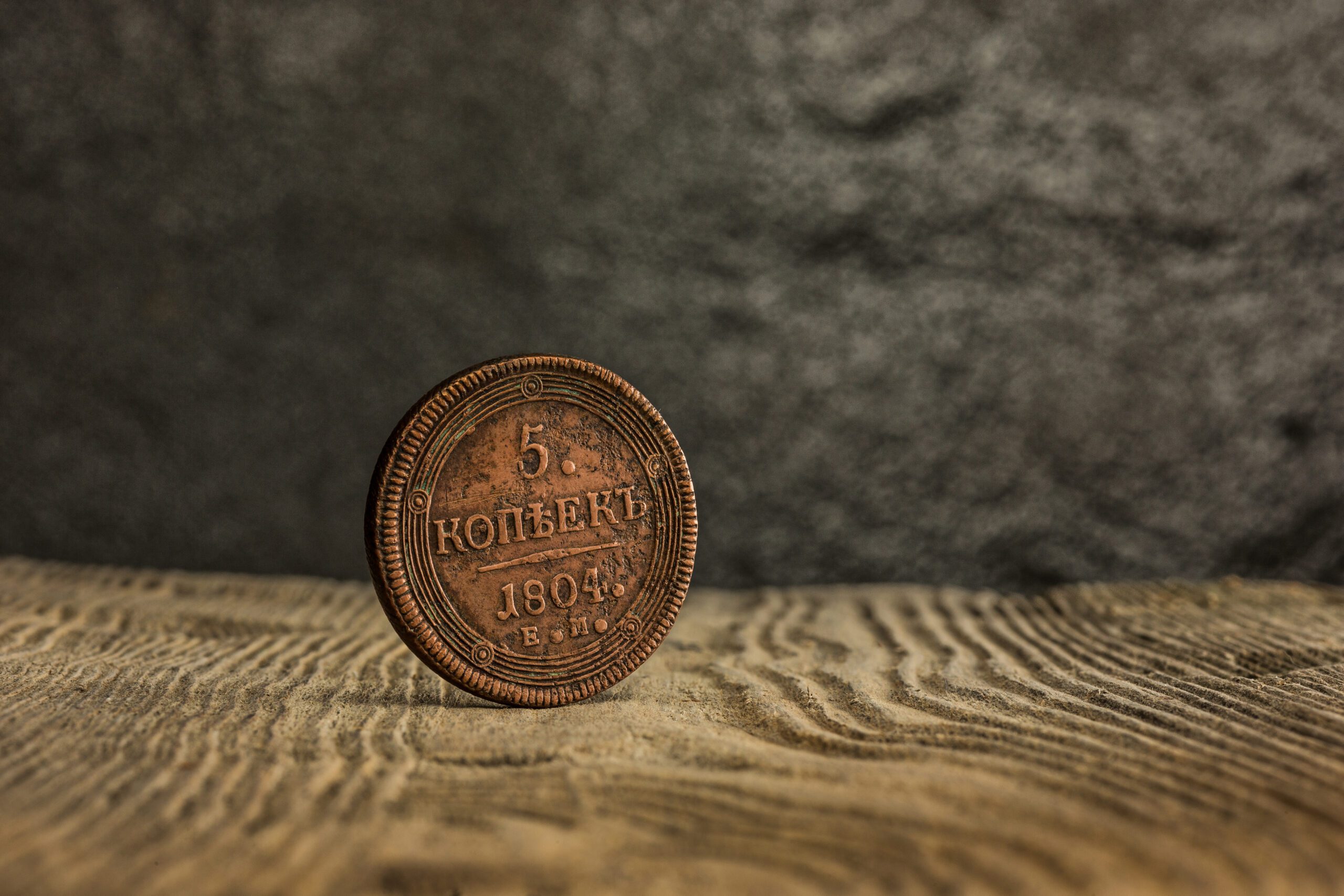
Investing in Collectible Coins and Currency: A Numismatic Journey
With finance and investments, there exist myriad avenues for individuals to explore. While stocks, real estate, and bonds are the usual suspects, there’s a captivating niche that promises both historical intrigue and the potential for substantial returns: investing in collectible coins and currency. In this article, we’ll move you step by step through the fascinating world of numismatics, exploring the ins and outs of investing in these tangible treasures. Without delay we open the door into the world of coins and currency, an unconventional but captivating investment landscape.
Table of Contents:
- Introduction
- A Captivating Niche in Finance
- Opening the Door to Numismatics
- Unearthing the Hidden Gems: A Treasure Hunt for the Ages
- The Allure of Numismatics
- Numismatics: A Glimpse into History
- Types of Collectible Coins and Currency: A Diverse Landscape
- Ancient Coins: Echoes of Empires
- Rare Coins: A Rarity Worth Pursuing
- Bullion Coins: Shining with Precious Metals
- Paper Currency: Banknotes with Stories
- Notgeld: Emergency Money with History
- Where to Find Collectibles: Your Treasure Map
- Local Coin Shops: The Heart of Numismatic Communities
- Auctions: Bidding for Rarity
- Numismatic Shows: A Gathering of Enthusiasts
- Online Marketplaces: Virtual Treasure Troves
- The Art of Selecting Your Investments: Navigating the Numismatic Maze
- Condition and Grading: The Language of Numismatics
- Rarity and Demand: The Thrill of the Hunt
- Historical Significance: The Value of Stories
- Material and Composition: The Weight of Value
- Authentication: Guarding Against Counterfeits
- Protecting Your Investments: Safeguarding Your Numismatic Treasures
- Proper Storage: Shielding Against the Elements
- Insurance: Guarding Against Loss and Theft
- Regular Inspection: Preserving Through Vigilance
- Preservation Through Knowledge
- The Road to Numismatic Prosperity
- Conclusion
Unearthing the Hidden Gems: A Treasure Hunt for the Ages
In the world of numismatics, the art of collecting and investing in coins and currency, there’s a captivating treasure hunt waiting to be embarked upon. The allure of this endeavor lies not in discovering conventional riches, but in unearthing hidden gems with historical significance, cultural value, and often, a substantial price tag.
The Allure of Numismatics: A Glimpse into History
Numismatics isn’t just a hobby; it’s a portal into the past. When you delve into the world of coins and currency, you’re essentially stepping into a time machine. Each coin or banknote you encounter carries within it a piece of history, a fragment of a bygone era. It’s akin to holding a tangible piece of a civilization’s narrative in your hand.
Imagine gazing at an ancient Roman coin featuring the profile of Julius Caesar. What stories could it tell of the Roman Empire’s rise and fall? Or consider a Confederate banknote from the American Civil War. How did it circulate during a period of profound societal upheaval? Numismatics offers a rare opportunity to connect with the past, making it a pursuit that’s both intellectually stimulating and emotionally resonant.
Types of Collectible Coins and Currency: A Diverse Landscape
The world of numismatics is a tapestry woven with diverse threads, offering a wide array of collectibles for enthusiasts. We will touch on some of the fascinating types of coins and currency that you can seek out in your treasure hunt:
Ancient Coins: Echoes of Empires
Ancient coins, often weathered by centuries, provide us with glimpses into the grandeur of past empires. They may bear the visage of a powerful emperor, a revered deity, or symbols that held deep significance in their time. Holding an ancient coin, such as a denarius from the Roman Republic, is like touching history itself.
Rare Coins: A Rarity Worth Pursuing
Rare coins are the gems within the world of numismatics. These are the items that set collectors’ hearts aflutter. Whether due to limited mintage, historical importance, or intriguing errors in their production, rare coins often command significant value in the market. The pursuit of these rarities is a thrilling adventure.
Bullion Coins: Shining with Precious Metals
Some coins are not just valuable for their historical or cultural significance but also for the precious metals from which they are made. Gold and silver bullion coins, like the American Gold Eagle or the Canadian Silver Maple Leaf, are not just pieces of art but also investments tied directly to the fluctuations in precious metal prices.
Paper Currency: Banknotes with Stories
Collecting paper currency is a journey through the evolution of economies and nations. Each banknote tells a unique story, be it the intricate designs of the Swiss Franc or the historical depictions on U.S. dollars. Rare and old banknotes, in particular, can be highly sought after by collectors and investors alike.
Notgeld: Emergency Money with History
Notgeld, which translates to “emergency money” in German, is a fascinating category of collectibles. These were issued during times of crisis, often during and after World War I and II. Notgeld comes in an array of imaginative and artistic designs, making it a niche within the numismatic world that appeals to those with a penchant for history and creativity.
Where to Find Collectibles: Your Treasure Map
Now that we’ve cast a light on the diverse treasures that await you in the world of numismatics, it’s essential to know where to embark on your treasure hunt. The quest for collectible coins and currency can take you to various intriguing places, both in the physical world and the digital realm:
Local Coin Shops: The Heart of Numismatic Communities
Local coin shops are often the heart and soul of numismatic communities. Here, you can engage with experienced collectors and knowledgeable dealers. They provide a physical space where you can inspect potential acquisitions up close and converse with fellow enthusiasts.
Auctions: Bidding for Rarity
Auctions, both online and physical, offer an exciting opportunity to acquire rare and valuable coins and currency. These events are like the grand bazaars of numismatics, where treasures change hands to the highest bidder. Participating in an auction can be a thrilling experience.
Numismatic Shows: A Gathering of Enthusiasts
Numismatic shows are gatherings where collectors, dealers, and enthusiasts converge. These events offer a unique chance to explore an array of collectibles, attend informative seminars, and connect with like-minded individuals who share your passion for numismatics.
Online Marketplaces: Virtual Treasure Troves
In the digital age, online marketplaces have become a primary hunting ground for collectors and investors. Websites like eBay, specialized numismatic marketplaces, and forums are teeming with a vast array of coins and currency from across the globe. You can explore and bid on items from the comfort of your own home.
As you prepare to start your numismatic journey, keep in mind that the path to hidden gems can take various forms. You might start by exploring your local coin shop or venture into the fast-paced world of online auctions. The key is to remain curious, diligent, and patient in your quest.
Now that you’ve been introduced to the enchanting world of numismatics, it’s time to take the first steps in your treasure hunt. Whether you’re driven by the historical significance of ancient coins, the allure of rare pieces, or the sheen of bullion coins, your journey promises to be filled with fascinating discoveries.
In the world of numismatics, every coin and banknote has a story to tell, and you’re the one who gets to unearth and preserve these hidden gems.
Stay tuned for the next installment of our numismatic journey, where we’ll take you into the art of selecting your numismatic investments and ensuring their protection.
The Art of Selecting Your Investments: Navigating the Numismatic Maze
Once you’ve dipped your toes into the mesmerizing world of numismatics, you’ll find yourself standing at a crossroads, faced with a vast array of collectible coins and currency. It’s here that the art of selecting your investments truly comes into play. Like a seasoned treasure hunter, you must hone your skills, gather knowledge, and make informed choices as you navigate the intricate maze of numismatic offerings.
Condition and Grading: The Language of Numismatics
Understanding the condition and grading of coins and currency is akin to learning a new language. It’s a crucial skill that will aid you in discerning the value and desirability of collectibles. Here’s a brief guide:
Coins Grading
Coins are typically graded on a scale that ranges from “Poor” to “Mint” (the highest quality). These grades are assessed based on factors like wear and tear, luster, and overall appearance. A coin in “Mint” condition is one that appears as if it just rolled off the minting press, with no signs of wear.
Paper Currency Grading
Banknote grading can vary from one system to another, but the most commonly used term for the best condition is “Crisp Uncirculated.” A Crisp Uncirculated banknote is one that appears fresh, with no creases, folds, or signs of wear.
As you delve deeper into numismatics, you’ll become more adept at evaluating the condition of items you encounter. The ability to assess condition accurately is an essential skill that will help you make informed decisions about potential investments.
Rarity and Demand: The Thrill of the Hunt
In the world of numismatics, rarity often equates to value. Collectibles that are scarce, whether due to limited mintage, historical importance, or intriguing errors, tend to be highly sought after. But the equation isn’t complete without factoring in demand.
Research Rarity
Invest time in researching the rarity of the coin or banknote you’re interested in. Understand the historical context, the number of items produced, and any unique attributes that make it special. This knowledge will be your compass in the numismatic maze.
Assessing Demand
Assessing the demand for a particular collectible can be just as crucial as evaluating its rarity. Popular coins or banknotes may have a higher number of potential buyers, making them more likely to appreciate in value over time. Stay connected with the numismatic community to gauge current trends and demand levels.
Historical Significance: The Value of Stories
Coins and currency often carry stories of the past, making historical significance a significant factor in determining their value. As you delve into the world of numismatics, you’ll discover that some pieces are more than just metal or paper; they’re tokens of history.
Going back into the Past
A coin from an ancient civilization, for instance, can offer insights into the culture and beliefs of that time. A banknote from a significant historical event carries the weight of the past. The more you step into the historical context, the better equipped you’ll be to make choices that align with your numismatic interests.
Material and Composition: The Weight of Value
For bullion coins, the value is closely tied to the precious metals from which they are made. Gold and silver, in particular, play a significant role in determining the worth of these coins. Keeping an eye on the current market prices for these metals is vital.
Precious Metal Content
Gold and silver bullion coins are prized not only for their design and rarity but also for the intrinsic value of the metals they contain. As a result, their prices are often linked to the current market prices of gold and silver. Staying informed about these fluctuations will help you make informed decisions.
Authentication: Guarding Against Counterfeits
In the numismatic world, the presence of counterfeit items is a real concern. To safeguard your investments, it’s crucial to ensure that any collectible you’re considering has been authenticated by a reputable grading service.
Reputable Grading Services
Reputable grading services employ experts who meticulously inspect and evaluate collectibles. They provide a certification that attests to the authenticity and condition of the item. Dealing with dealers who use these services can give you confidence in your purchases.
As you become more interested about the world of numismatics, these considerations become your guiding stars. The art of selecting your investments is a blend of historical exploration, economic acumen, and a keen eye for the unique and the rare.
Remember that, just like in a treasure hunt, there will be times of uncertainty and moments of exhilaration. Each acquisition you make adds to the story of your numismatic journey, and as you gain experience, you’ll become an adept collector and investor in the captivating world of collectible coins and currency.
Protecting Your Investments: Safeguarding Your Numismatic Treasures
In the world of numismatics, your collectible coins and currency are not just financial assets; they’re tangible pieces of history and culture. To ensure they retain their value and allure, protecting your investments is paramount. Just as an archaeologist preserves ancient artifacts, you must safeguard your numismatic treasures against the ravages of time and external threats. Here’s how to ensure your prized collectibles remain in pristine condition.
Proper Storage: Shielding Against the Elements
The first line of defense for your numismatic investments is proper storage. Your collectible coins and currency are susceptible to environmental factors such as moisture, air pollutants, and physical damage. Here’s how to shield them from harm:
Coin Holders and Capsules
For your coins, investing in holders or capsules is a wise choice. These protective enclosures shield your coins from physical contact, moisture, and airborne pollutants. Transparent capsules allow you to admire your coins without the risk of handling them directly.
Currency Sleeves and Holders
Banknotes should be stored in specialized currency sleeves or holders designed to prevent creases, folds, and damage. These holders are typically made from materials that won’t harm the paper, ensuring your banknotes remain in pristine condition.
Albums and Folders
For a more organized approach, consider using albums or folders designed for numismatic collections. These provide safe compartments for your items, allowing you to display and protect them simultaneously.
Climate Control
Maintain a stable environment by controlling temperature and humidity. Extreme fluctuations in either can lead to the deterioration of your collectibles. Avoid storing numismatic items in basements or attics, where moisture levels can vary drastically.
Insurance: Guarding Against Loss and Theft
Numismatic items can be valuable, and their loss due to theft or damage can be financially devastating. Insuring your collection is a smart move to mitigate these risks.
Collector’s Insurance
Numerous insurance companies offer specialized collector’s insurance. These policies cover your numismatic collection against theft, damage, or loss. Be sure to consult an insurance agent experienced in numismatic coverage to get the best policy for your needs.
Regular Appraisals
Regularly appraise your collection to ensure your insurance coverage reflects its current value. The numismatic market can experience fluctuations, and an up-to-date appraisal will guarantee that your coverage adequately protects your investments.
Regular Inspection: Preserving Through Vigilance
Preventative measures are essential in numismatics. Regularly inspect your collectibles to detect any signs of deterioration or damage.
Handling with Care
When examining your coins and currency, handle them with clean, dry hands to prevent the transfer of oils and dirt. Always touch the edges or non-design areas to avoid leaving fingerprints.
Numismatic Gloves
Consider using numismatic gloves, which are lint-free and prevent direct contact with your collectibles. These gloves are particularly useful when you need to handle items frequently for inspection.
Magnification Tools
A magnifying glass or loupe is invaluable for closely inspecting the condition of your coins. Small imperfections or details can significantly impact the value of a collectible.
Record Keeping
Maintain detailed records of your collection, including purchase receipts, appraisals, and photographs. These records are essential for insurance claims and the tracking of your collection’s history.
Frequently Asked Questions
- Is there a specific insurance policy for numismatic collections?
- Yes, many insurance providers offer specialized collector’s insurance tailored to the needs of numismatists.
- How often should I have my collection appraised for insurance purposes?
- It’s advisable to have your collection appraised every 1-3 years, or sooner if there have been significant market changes.
- What should I do if I suspect damage to a collectible?
- If you notice damage or deterioration, consult a professional numismatist for advice on restoration or conservation.
- Is it essential to store my collection in a climate-controlled environment?
- While not always necessary, maintaining stable temperature and humidity levels can prolong the lifespan of your collectibles.
- Are numismatic gloves necessary for handling collectibles?
- While not mandatory, numismatic gloves can prevent fingerprint transfer and provide an extra layer of protection for your items.
Preservation Through Knowledge
Preservation of your investments is as crucial as their selection. Your collectible coins and currency are more than just financial assets; they’re gateways to history and culture. By taking the necessary steps to protect them, you ensure that future generations can appreciate the rich narratives they carry.
Your role as a custodian of these numismatic treasures is one of great responsibility. As you watch over your collection, you’re not merely safeguarding your investments; you’re preserving a vital part of our shared heritage.
The Road to Numismatic Prosperity
Investing in collectible coins and currency is not merely a financial venture; it’s a journey into the past, a glimpse of other cultures, and a way to hold history in your hand. With the right knowledge and a discerning eye, you can transform this hobby into a profitable and meaningful investment. Just remember, every coin and banknote tells a story, and you’re now part of that narrative.
Conclusion
In the world of investments, stepping off the beaten path can sometimes lead to the most intriguing and rewarding discoveries. Investing in collectible coins and currency may not be conventional, but it offers a unique opportunity to diversify your portfolio with items that hold historical and cultural significance. As you embark on this numismatic journey, patience and knowledge are your best allies in the pursuit of numismatic prosperity.
With the proper research, attention to condition and rarity, and the inclusion of these tangible treasures in your investment strategy, you’ll be well on your way to uncovering hidden gems and, potentially, realizing substantial returns.






